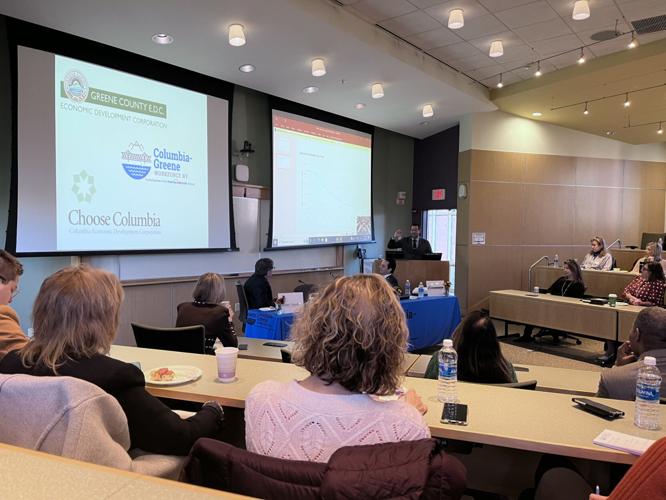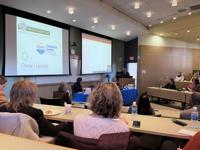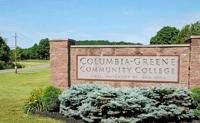HUDSON — A shortage of workforce and housing for employees in the Twin Counties were the leading topics discussed at the Columbia-Greene Economic State of the Counties roundtable Friday at Columbia-Greene Community College.
Chris Nardone, director of the Columbia-Greene Workforce, said although there was a 6.5% growth in population across both counties, there was a 10% drop in the labor force.
“We have a situation where the people that are coming to the counties, that are growing our populations and are not people who are participating in our labor force,” Nardone said. “And to compound that, they’re also displacing working families that have been here that have traditionally filled those positions.”
He said there is hope for businesses to find employees.
“Employers need to focus on retention,” he said. “You have to keep the people that you have happy; you have to make sure they don’t leave you.”
September’s unemployment rate for Greene County was 3.4%, with 700 people unemployed while Columbia County’s rate is 2.7%, according to the New York Department of Labor.
Nardone said employers need to look for employees in untapped markets, including hiring people with disabilities.
Immigrants and asylum seekers can also present an employee opportunities for businesses, he added.
“I think there are people that want jobs, and that want to be here,” Nardone said. “The difficulty we have, especially in this area, is where do we house those people? And how do we assist them in becoming employment eligible and help them make that transition from asylum seeker to a person who’s employed and engaged in our labor force?”
The median sale prices of homes in Greene County rose 81% — from $179,000 in 2018 to $325,000 in 2022, according to data from a Greene County Workforce Attainability report.
The report also found that rental housing in Greene County is not affordable or available.
James Hannahs, executive director of the Greene County Economic Development Corporation, said Greene County’s most in-demand workers are being priced out of the housing market due to the lack of workforce housing.
“There are no examples of new construction housing across Greene County,” James Hannahs, executive director of the Greene County Economic Development Corporation, said at the meeting.
The Economic Development Corporation is working with both public and private partners to develop incentive packages for developers to make developing in Greene County more attractive, he said.
“These housing developers need to come in, they need to make a return (on their investments in the county),whether or not those are expressed in low-income housing tax credit funding opportunities, or if they’re expressed in other compelling, creative financing solutions,” Hannahs said.
“Lay everything on the table, we have to be able to attract developers and build workforce housing,” he added.
Previously, economic development was focused more on community impacts, instead of workers, Hannahs noted.
He added housing has to be at the forefront of economic development.
“The main driving factor that is going to impact our ability for population growth, continued sales tax growth, and continued infrastructure development is really going to lean on who are the people that are going to be working and contributing to the tax base,” Hannahs said. “And where the hell are they going to live.”











